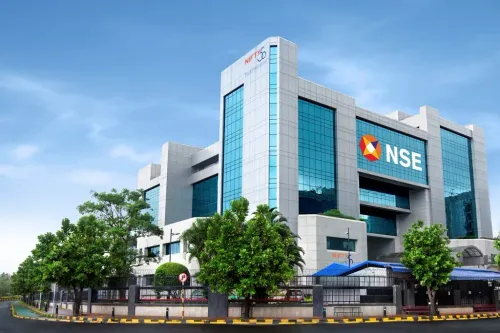What Keeps India's Financial Institutions Resilient Amid Uncertainty?

Synopsis
Key Takeaways
- Infrastructure spending and private consumption are critical for India's economic growth.
- The outlook for global banks remains stable despite political uncertainties.
- Credit losses are expected to rise but are deemed manageable.
- Emerging stress factors in personal loans are present, but secured loans remain healthy.
- Geopolitical risks and regulatory challenges pose significant threats.
New Delhi, Nov 13 (NationPress) According to a recent report, global banks are projected to maintain a stable outlook in 2026 despite rising political uncertainties. The report emphasizes that structural enhancements and positive economic forecasts are crucial in ensuring the resilience of India's financial institutions.
India's infrastructure investments and private consumption are expected to drive strong economic growth. The report from S&P Global Ratings states, “We foresee promising prospects for the economy over the next few years. India's minimal exposure to US trade lowers tariff-related risks.”
Commenting on the global banking environment, S&P Global Ratings credit analyst Emmanuel Volland noted, “Banks are navigating through turbulent times where major policy decisions and regional conflicts may impact financial markets and swiftly alter the economic landscape.”
In terms of the Indian financial sector, the report indicates that while there are emerging stress areas in unsecured personal and microfinance loans, the underwriting standards for secured retail loans remain robust, and delinquencies in this area are under control.
The forecast anticipates that global banks' credit losses will rise to $655 billion by 2026, marking a 7.5 percent increase year-on-year, with a deceleration in loss growth expected in 2027.
Most of the additional losses are anticipated in the Asia-Pacific region, primarily due to tariff-related uncertainties affecting lending to China's micro and small enterprises, as well as its unsecured consumer credit sector.
“We consider these losses manageable for banks, supported by generally strong profitability and improved prudential regulations established in recent years,” the report added.
Furthermore, S&P Global Ratings pointed out four significant downside risks to global bank ratings, including heightened geopolitical tensions, unexpected repercussions from tariff disruptions, declining regulatory frameworks, and evolving threats associated with digitalisation, generative AI, and climate change.
Volland remarked, “We anticipate an eventual increase in credit divergence,” while highlighting that solid bank financial metrics—such as asset quality, profitability, and favorable market conditions—continue to be consistent tailwinds.









